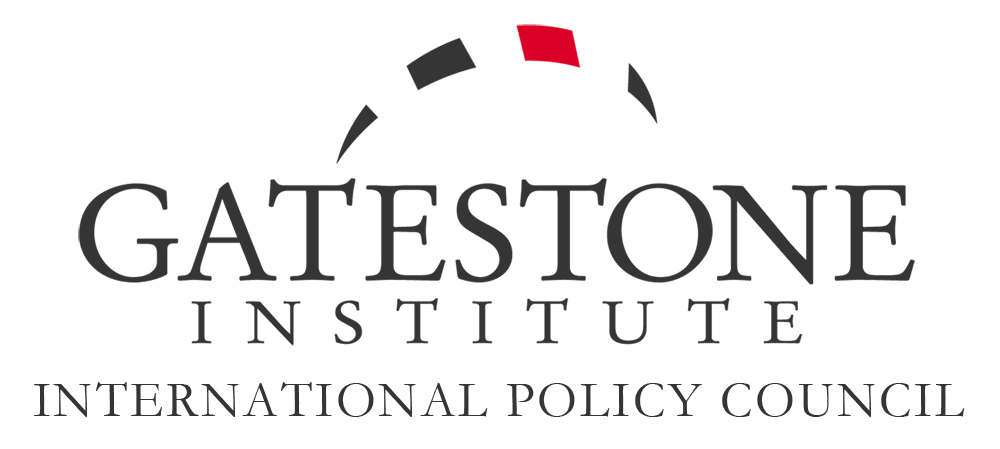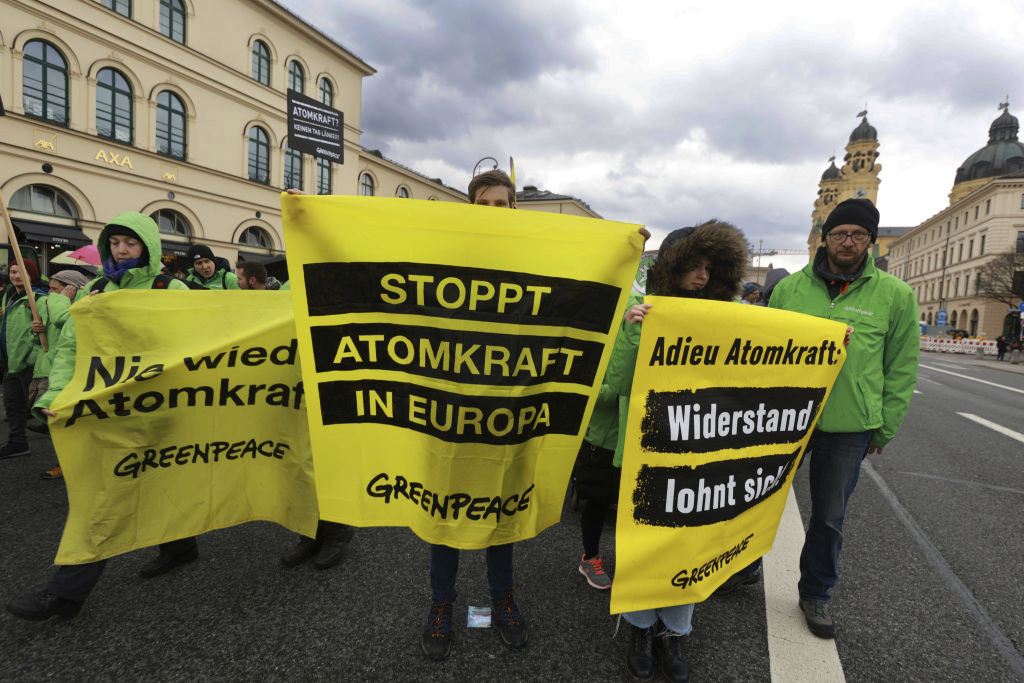 Magen David (“Star of David”). Credit: Dziurek/Shutterstock.
Magen David (“Star of David”). Credit: Dziurek/Shutterstock.
 Dlaczego liberałowie ponieśli porażkę w walce z antysemityzmem
Dlaczego liberałowie ponieśli porażkę w walce z antysemityzmem
Jonathan S. Tobin
Tłumaczenie: Małgorzata Koraszewska
Fala antysemityzmu po 7 października wstrząsnęła tym samozadowoleniem i stworzyła coś, co można nazwać kryzysem wiary wśród świeckich żydowskich liberałów, niepodobnym do niczego, z czym spotkali się wcześniej. Jak jasno wynika z okładki magazynu „Atlantic”, nie tylko tłumy na kampusach uniwersyteckich i na ulicach głównych miast skandowały nawoływanie do zniszczenia Izraela („od rzeki do morza”) i nawoływały do terroryzmu przeciwko Żydom, gdziekolwiek się znajdują („globalizować intifadę”), co wstrząsnęło amerykańskimi żydowskimi liberałami. Tym, co nimi wstrząsnęło było zrozumienie, że przejęcie dużej części systemu edukacji, kultury popularnej, a nawet rządu przez ideologie lewicowe nie ma na celu jedynie obalenia tradycyjnych idei na temat zachodniej cywilizacji i Ameryki, ale że jest to bezpośrednie zagrożenie dla Żydów.
Oto podstawowa prawda zawarta w ponurym eseju Franklina Foera w „Atlantic” zatytułowanym The Golden Age of American Jews Is Ending [Kończy się złoty wiek amerykańskich Żydów]. Jako członek waszyngtońskiego liberalnego establishmentu o dobrej reputacji Foer, obecnie publicysta w „Atlantic” i były redaktor „The New Republic”, a także starszy brat powieściopisarza Jonathana Safrana Foera, jest dobrze przygotowany, aby mówić o załamaniu się pewności siebie większości amerykańskiego żydostwa w ostatnich miesiącach. I choć trochę się myli, próbując umieścić ostatnie wydarzenia w kontekście amerykańskiej historii Żydów i antysemityzmu minionego stulecia, w jednej kwestii z pewnością ma rację.
Koniec amerykańskiej wyjątkowości
Zmiana w sposobie myślenia wielu amerykańskich elit stworzyła coś więcej niż tylko kilka nieprzyjemnych chwil dla dużego odsetka Żydów, których życie opiera się na ich niekwestionowanym miejscu w życiu narodu. Foer przypisuje powszechną akceptację Żydów w praktycznie każdym sektorze amerykańskiego życia – środowisku akademickim, biznesie, kulturze, rządzie – okresowi rozkwitu szczególnie inkluzywnej marki amerykańskiego liberalizmu, który osiągnął swój szczyt pod koniec XX wieku. Zastąpienie tego systemu przekonań nową ortodoksją krytycznej teorii rasy, intersekcjonalności i „przebudzonego” katechizmu różnorodności, równości i inkluzywności nie tylko ma na celu zmianę amerykańskiego społeczeństwa na gorsze; oznacza to koniec tych samych aspektów amerykańskiej wyjątkowości, które umożliwiły „złoty wiek” dla Żydów.
Niemniej, choć Foer przyznaje, że Żydzi tacy jak on nie mieli racji sądząc, że antysemityzm jest przede wszystkim cechą amerykańskiej prawicy, nadal jest on w zbyt dużym stopniu wytworem partyjnego sposobu myślenia, aby w pełni rozpoznać, co się stało i dlaczego. Jego krótka historia ostatnich 100 lat życia Żydów w Ameryce i wzrostu antysemityzmu w ostatnim ćwierćwieczu jest sztucznie bezstronna, jeśli chodzi o przypisywanie winy za obecne problemy Żydów.
To właśnie ten brak jasności co do problemu leżącego u podstaw pesymistycznego wniosku o końcu dobrych czasów dla amerykańskiego żydostwa, którego to wniosku, mimo że atmosfera po siódmym październiku 2013 r. wydaje się go potwierdzać, nie należy w pełni akceptować. Dzieje się tak dlatego, że utrzymanie miejsca Żydów w amerykańskim społeczeństwie zależy od tego, czy Żydzi zerwą ze swoimi niegdysiejszymi sojusznikami na lewicy, a nie tylko, jak robi to Foer, ograniczą się do ubolewania z powodu ich zdrady.
Niezbędne do tego jest uznanie, że jeśli liberalizm ma zostać ocalony, należy uznać porażkę liberałów w obronie zarówno zachodniej cywilizacji, jak i Żydów przed intersekcjonalną lewicą. Po tym musi nastąpić zarówno całkowite odrzucenie „przebudzonego” antysemityzmu, jak i sojusz z konserwatystami, którzy są jedyną siłą w tym kraju chcącą lub zdolną odwrócić lewicową falę zagrażającą bezpieczeństwu Żydów. Wątpliwe jest, czy żydowscy liberałowie są zdolni do samoświadomości i uczciwości, by skonfrontować się z prawdą o ich kłopotliwym położeniu w tej sprawie. Ale większość Żydów jest równie nieprzygotowana do życia z alternatywą, jaką jest akceptacja statusu pogardzanej mniejszości lub pakowanie walizek w poszukiwaniu lepszego życia gdzie indziej.
Co stworzyło „złoty wiek”?
Błędne rozumienie Foera tego, co umożliwiło „złoty wiek” – którego uosobieniem w jego eseju jest wyemitowany w 1978 r. w godzinach największej oglądalności telewizyjny hołd z okazji 30. urodzin Izraela, podczas którego Barbra Streisand rozmawiała z Goldą Meir, a następnie zaśpiewała „Hatikwę” – jest kluczem do jego niechęci do myślenia rozsądnie, jak go bronić. Postrzega on akceptację Żydów w Ameryce wyłącznie jako produkt polityki Partii Demokratycznej z połowy XX wieku, a jest to błąd. Społeczność żydowskich imigrantów, która osiągnęła dojrzałość w latach trzydziestych XX wieku i która pozornie pokonała wszystkie tradycyjne przeszkody na drodze do awansu do początków XXI wieku (kiedy nominacja senatora Joe Liebermana jako partnera Ala Gore’a podczas kampanii prezydenckiej zdawała się wynieść Żydów na nieprzewidziane wyżyny) wykazała przytłaczające poparcie Demokratów i liberalizmu politycznego.
Choć Żydzi borykali się z innym zestawem problemów niż inne etniczne/religijne grupy imigrantów, ich zdolność do prosperowania w społeczeństwie amerykańskim była efektem tego samego procesu, który doprowadził do integracji innych społeczności, które przybyły masowo z Europy pod koniec XIX wieku i na początku XX wieku. Podobnie jak inni, Żydzi potrzebowali kraju, w którym praworządność nie była kwestionowana, a dyskryminacja religijna była zakazana. Amerykańska wyjątkowość opierała się na trzymaniu się przez naród wartości zapisanych w dokumentach założycielskich, dotyczących równości szans, a także wiary w zasługi merytoryczne, niezależnie od pochodzenia i rasy. To właśnie te podstawowe zasady, a nie, jak sądzi Foer, przychylność Franklina Roosevelta lub liberalny Sąd Najwyższy, który zakazał modlitwy w szkole, chroniły Żydów.
I to właśnie obalenie tych zasad przez ruch neomarksistowskich studiów krytycznych i awangardę polityczną, która – jak przyznaje Foer – wdrożyła w społeczeństwie amerykańskim swoje dotychczasowe ekstremistyczne teorie, stworzyło sytuację zagrażającą dzisiejszym Żydom.
Foer szczególnie zawodzi w swojej analizie, ponieważ nie umie dostrzec głębokiej różnicy pomiędzy wpływem skrajnie prawicowych żydożerców a intersekcjonalną lewicą, której nienawiści do Izrael i Żydów nie można ignorować po 7 października.
Prawicowy antysemityzm istnieje. Dało się to odczuć podczas demonstracji, takich jak wiec neonazistów w Charlottesville w stanie Wirginia w sierpniu 2017 r., którego płonące pochodnie przypominały Żydom o wiecach Adolfa Hitlera w Norymberdze i o trwającej nienawiści w Internecie. Strzelaniny w wykonaniu prawicowych „samotnych wilków”, takie jak mordercze ataki na synagogi w Pittsburghu w 2018 r. i Poway w Kalifornii w 2019 r., były tragiczne i naprawdę przerażające.
Jednak próby przykrojenia narracji o byłym prezydencie Donaldzie Trumpie lub Republikanach jako tych, którzy umożliwiają działania tych ekstremistów, były partyjną kłamliwą propagandą. Ci, jak Foer, którzy krytykę interwencji lewicowego miliardera George’a Sorosa w amerykańską politykę – zwłaszcza finansowanie przez niego kampanii lokalnych prokuratorów, którzy nie są zainteresowani karaniem przestępców w więzieniach – traktują jako antysemityzm, są nieuczciwi i podważają wysiłki na rzecz zwalczania prawdziwej nienawiści do Żydów.
Lewica naprawdę nienawidzi Żydów
Dla kontrastu, ugruntowanie przez lewicę poglądów o Żydach jako „białych” ciemiężycielach, którzy powinni być uprawnionym celem terroru i ludobójstwa w Izraelu, a także zastraszania i obelg w Stanach Zjednoczonych, zostało włączone do głównego nurtu kultury, dziennikarstwa i polityki w sposób, jaki w Ameryce nigdy nie miał miejsca w przypadku prawicowego wariantu antysemityzmu.
Foer wyznaje, że uważał, że lewicowcy atakujący Izrael nie stanowią problemu, ponieważ założył, że są odpowiednikiem liberalnych syjonistów takich jak on, którzy nie lubią premiera Benjamina Netanjahu i jego rządu. I nawet teraz niechętnie przyjmuje definicję antysemityzmu, która słusznie obejmuje antysyjonizm.
Jak jednak zrozumiał od 7 października, intersekcjonalna lewica rezerwuje swoje współczucie dla Palestyńczyków, którzy chcą zniszczyć Izrael i wymordować jego naród, a nie dla lewicowych, pełnych dobrych intencji Żydów, którzy chcą rozwiązania w postaci dwóch państw. I nie mają skrupułów przed rozszerzeniem swojej niechęci na przeważającą większość Żydów, którzy nie chcą wyrzec się syjonizmu lub zadeklarować swój sprzeciw wobec istnienia jedynego państwa żydowskiego na planecie. Jeśli popieranie ludobójstwa Żydów nie jest już nie do pomyślenia nawet na kampusach takich jak Harvard, to jasne jest, że niewiele jest miejsca na tego rodzaju pewne siebie żydowskie istnienie w elitarnych instytucjach lub na forum publicznym, gdzie liberalni Żydzi sądzili, że Ameryka jest również ich domem.
Progresiści, którzy umożliwiają antysemityzm, są obecnie potężną siłą w polityce w sposób nie do pomyślenia na prawicy, gdzie Republikanie stali się partią proizraelską, a filosemityzm jest głęboko wpisany w polityczne DNA ewangelików, czego liberalni Żydzi boją się bardziej niż antysemickich członków lewicowego „Szwadronu” w Kongresie.
Foer omawia możliwość ucieczki Żydów do miejsc takich jak Niemcy w poszukiwaniu bezpieczniejszej egzystencji, ale to pokazuje, że jeszcze bardziej nie ma pojęcia o sytuacji w Europie. Czerwono-zielony sojusz pomiędzy rosnącą populacją islamistycznych imigrantów z Bliskiego Wschodu i Afryki Północnej a lewicowymi elitami, które zgadzają się co do tego, że wspólnie obierają za cel Żydów, jest szczególnie silny w Europie Zachodniej. Co charakterystyczne, Foer nie omawia jedynego miejsca, które nawet po 7 października pozostaje najbardziej prawdopodobnym i najbezpieczniejszym miejscem docelowym dla Żydów: Izraela. Tam mogą się bronić i decydować o swoim losie.
To, co wydarzyło się od 7 października, jest jedynie potwierdzeniem wielu innych trendów, w ramach których tradycyjni liberałowie okazali się niezdolni lub niechętni do obrony zachodniego kanonu wartości w środowisku akademickim, instytucji rodziny przed indoktrynacją gender oraz zasady równości szans przeciwko doktrynie DEI, która nakazuje jej zniszczenie. Nic więc dziwnego, że w podobny sposób albo porzucili Żydów przechodząc na stronę tych, którzy ich atakują, albo okazali się zbyt słabi, aby się im przeciwstawić. Gotowość prezydenta Joe Bidena do płaszczenia się przed antysemickimi wyborcami w amerykańskiej „stolicy dżihadu”, w Dearborn w stanie Michigan, jest tylko najbardziej jaskrawym tego przykładem.
Foer nie rozumie również, że choć sytuacja Żydów może być tragiczna, nie jest z góry przesądzone, że obrona „złotego wieku” – lub przynajmniej powszechnej akceptacji Żydów – jest skazana na niepowodzenie. To prawda, że wycofywanie intersekcjonalnych i budzących się rasistowskich doktryn, które zawładnęły tak wieloma amerykańskimi instytucjami i sektorami społeczeństwa, jest olbrzymim zadaniem. Ale nie jest to niemożliwe.
Długi marsz progresistów przez instytucje amerykańskie, gdzie promowali swoje doktryny, nigdy nie został przegłosowany przez naród amerykański, a większość jest mu przeciwna. Władza rządowa, która to umożliwiła, może równie łatwo tego zakazać. W tej walce Żydzi nie są sami. Prawica polityczna jest zaangażowana w pokonanie ideologii „przebudzonych” przede wszystkim dlatego, że stanowi zagrożenie dla Ameryki i Zachodu. Działania takie jak zakaz DEI na Florydzie ilustrują, jak można odwrócić tę falę.
Tylko wygrana walka o Zachód i amerykańskie wartości, które liberałowie atakują, może przywrócić wyjątkowość Ameryki. Ale jeśli liberalni Żydzi mają odegrać rolę w powstrzymaniu ruchu, który obrał ich za cel ataku, będą musieli przezwyciężyć swoją odrazę do konserwatystów i w końcu przyłączyć się do walki przeciwnej „przebudzonej” lewicy.
To jest coś, co będzie niemożliwe dla ludzi takich jak Foer, a także dla istniejących organizacji, takich jak Anti-Defamation League i American Jewish Committee, które są zbyt przywiązane do swoich tradycyjnych sojuszników politycznych, by zrobić wszystko, co konieczne dla obrony Żydów. Nie zdają sobie sprawy, że jeśli nadal będą odmawiać traktowania walki z „przebudzoną” ideologią jako walki egzystencjalnej, która powinna mieć pierwszeństwo przed wszelkimi innymi sprawami krajowymi, nie tylko zagwarantują nieliberalną przyszłość temu krajowi, w którym antysemityzm będzie w głównym nurcie. Skutecznie zapewniają także, że czasy Ameryki jako bezpiecznej przystani dla Żydów naprawdę się skończą.
Jonathan S. Tobin jest redaktorem naczelnym amerykańskiego magazynu JNS (Jewish News Syndicate).
Zawartość publikowanych artykułów i materiałów nie reprezentuje poglądów ani opinii Reunion’68,
ani też webmastera Blogu Reunion’68, chyba ze jest to wyraźnie zaznaczone.
Twoje uwagi, linki, własne artykuły lub wiadomości prześlij na adres:
webmaster@reunion68.com





